10. RCMP Henry Budd and "Civilizing" the Frontier: illustrated history of landships, 1858-2008
All Rights Reserved, 2025. See author's note.
Author’s note: It’s been a while since I have published one of these and I realize it may not be everyone’s cup of tea. The study of individual landships is a hobby of mine. If you are unfamiliar with the history of landships, you may wish to read the Introduction linked below.
As far as we are aware, all images are taken from public domain sources; please inform the author of any mistakes in this regard. In terms of any original sketches, these are amateur attempts based on the author’s own archival research. This remains an AI-free zone.
In memory of Dad, who taught me a love for all things historical, and in homage to William Pène du Bois, who opened up my imagination.
1) Introduction and the Great Gravitational Shift
2) The Sally Ann and Westward Expansion
3) The Boudreaux Circus Ship and Reconstruction
4) HML Transvaal and British Colonialism
5) Le Maréchal Murat and the Helium Wars
6) São Fitzcarrald and the Naughts Arms Race
7) The Sarhoş Selim and Ottoman Decline
8) The BSA Wiate-Powell and the American Century
9) SML von Steuben and the Brutality of War
The RCMP Henry Budd, 1920
The RCPM Budd was a simple but unique craft that both paved the way for later landships and provided a unique experiment in church-state landship cooperation.
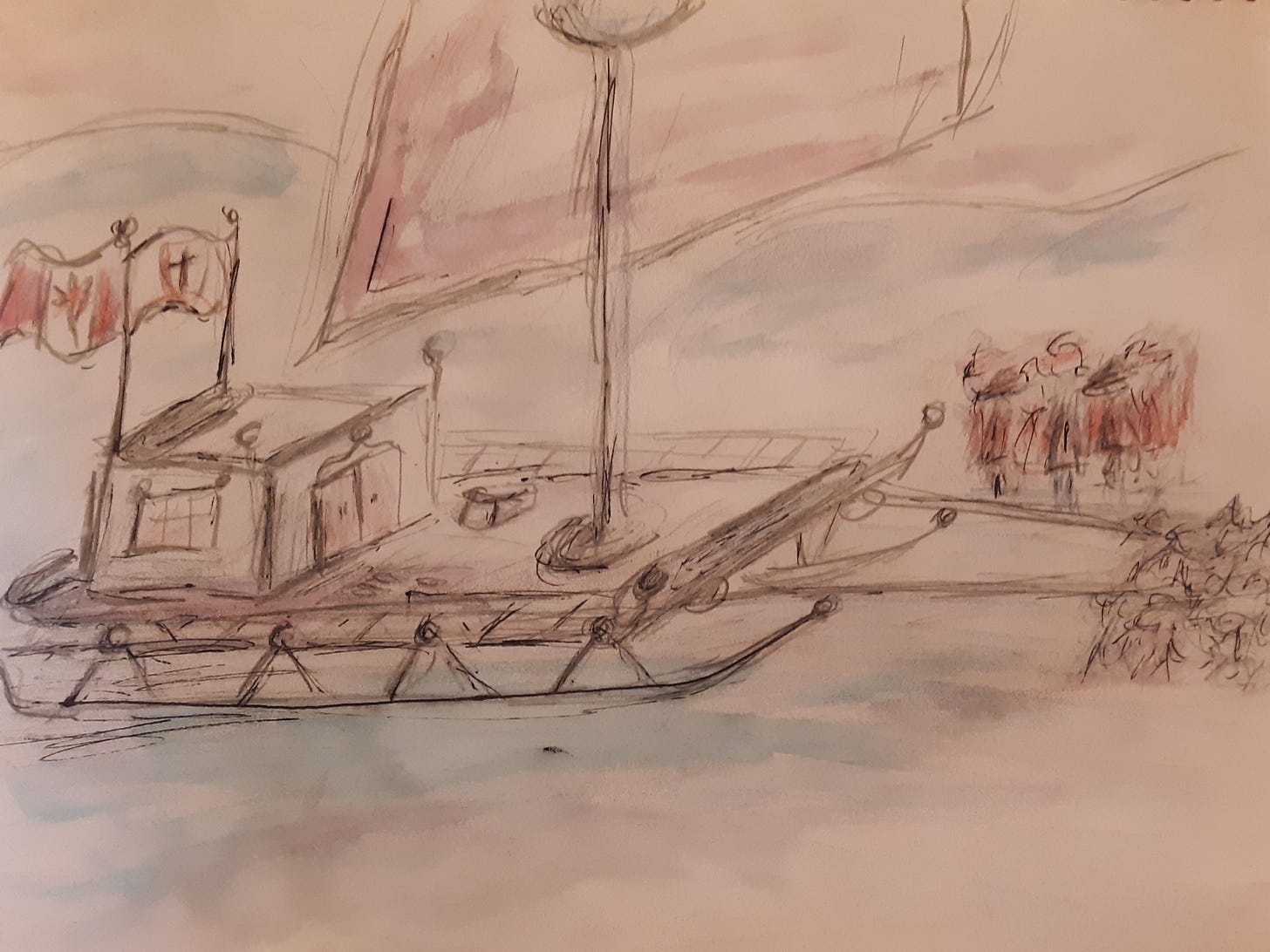
Class & Type: n/a (only one built)
Crew: 10
Capacity/Complement: c. 7-8 passengers (see below)
Construction: 1920, custom ordered, Great Slave Lake Longshore Union
Hull: Aluminum, wood
Buoyancy: Furloy
Buoyancy source: n/a
Wheels/track: n/a - all skis with suspension system
Propulsion: Huskie train
Sail Plan: square
Power plant: n/a
Length: 54’
Beam: 20’
Decks: 3 - crawlspace, main deck, and roof/lookout deck
Weight (empty): 6 tons
Clearance: 5.5’
Steering: by Huskie and/or sail
Speed: 5-20 mph
Armor: n/a
Armament: n/a, c. 8 rifles, 12 sidearms
Communications: radio
Other Transportation: skis or snowshoe
Amenities: office/chapel
Fate: sold to U.S., destroyed in Atoll nuclear tests, 1946
~~~~~
On October 31, 1924, an urgent telegram came to the Royal Canadian Mounted Police station in the remote city of Inuvik, Northwest Territory:
URGENT - STOP - EXPLOSION ABOARD TRAIN ON KETTLE VALLEY LINE 29 OCT - STOP - JOHN MCKIE AND PETER VERIGIN DEAD - STOP - PRESUMED ASSAILANTS SEEN FLEEING NORTH ON FOOT ALONG WILLISTON LAKE - STOP - THEY MUST BE STOPPED - STOP - PROCEED IMMEDITADLY (sic) TO APPREHEND OR DISPOSE OF SUSPECTS - STOP - SIGNED COMMISSIONER AYLESWORTH BOWEN PERRY - END
Thus began the RCMP Henry Budd’s greatest adventure: the epic manhunt across ice and snow for the assassins of Peter Veregin, one of Canada’s most unusual figures.
In popular landship history few would name the Budd as one of history’s seminal landships, but terranavislogists know differently. The Mounties broke new landship ground by being the first to equip their ships with Furloy, the most common buoyant used in post-1939 landships. Indeed, without Furloy, none of the Cold War era nuclear-powered Behemoth Class landships would have been possible.
Furloy is often mistaken by laypeople as a gas, but it is more precisely an anti-gravity alloy invented by Houghton Furlong in 1912. The details of this astounding discovery have been well documented by William Pène du Bois in his famous historical work, Peter Graves. A silvery metal with positive mass but negative weight, Furloy could be fashioned into Zeppelin-shaped air buoys which were sometimes pumped with helium for extra lift. Hydrogen proved too volatile in reaction to the thin Furloy skins, as discovered by two of Houghton’s “red shirts” whose names have been lost to history. This volatility was the reason that the U.S. Department of War initially declined to invest in Furloy until after their neighbors to the North proved its worth.
While Furloy was not strong enough to make up the hull and superstructure of landships, it proved to be the perfect anti-gravity boost that large landships needed to improve their odds once the Great Gravitational Shift of 1858 made their existence possible. This is why terranavislogist engineers have often used the formula L = GS + F(H), scratched on many a blackboard between the years 1920-2008. Alas, as has gone the blackboard, so have gone landships, replaced by vehicles of greater efficiency, if less romance. But none of this romance would have been possible were it not for the adventuring spirit of the RCMP Henry Budd.
~~~~~
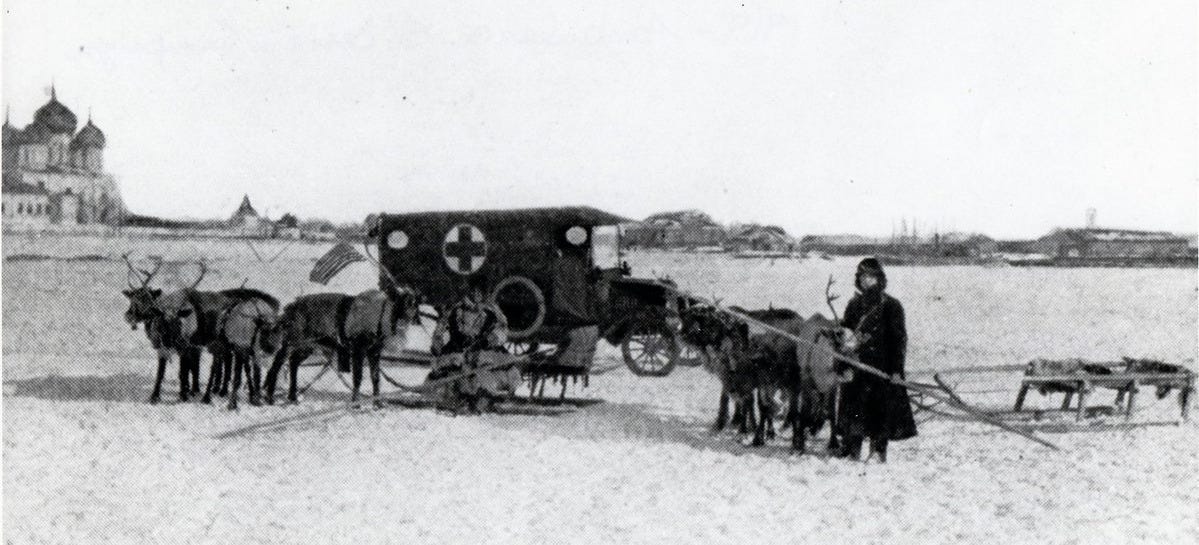
In terms of engineering, the basic layout of the Budd was simple and skiff-like, not too different from history’s first landship, the Sally Ann. Made for speed rather than tonnage, the relatively small size of the Budd puts it just above Professor Stunberry’s classic landship definition. Initial blueprints indicate the RCMP Budd was built to be a Mountie patrol craft of some sort, perhaps in response to the failed Canadian Siberian Expedition Force. But as we will see, she soon became something of all-purpose craft, a unique church-state landship. It is unclear when bishops or functionaries first proposed this hybrid function, but adding a priest or two did not fundamentally alter the ship design.
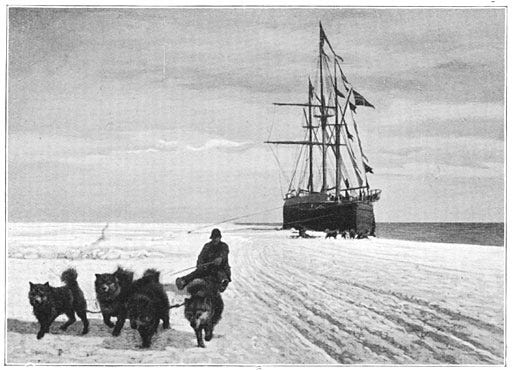
If the Budd offered distinctive physical traits beyond its first use of Furloy, it certainly had to do with its sleek, all-ski design and quirky thin, rectangle sails. Like the Sally Ann, the sails were added as supplemental to its main propulsion - old fashioned animal power. However, unlike the Sally Ann’s sturdy but slow oxen, the Budd was pulled by a team of two dozen Canadian Huskies.
Initial snow tests employed elk and moose teams, both of which proved oxen-like in execution - steady, but too slow for the harsh sub-Artic conditions of northern Canada. Survival required speed over strength. Likewise, students should not be confused by the Finnish landships from the Russo-Finnish conflict which did in fact employ reindeer, causing them to be dubbed by the OSS as “Joulupukkis” or J.P.’s - “jeeps.” Later, the American military all purpose vehicle stole that nickname away from the Finns, a linguistic coup that still irks dedicated terranavislogists.

The sails of the Budd were designed to catch what wind they could without becoming subject to the damage that blowing snow and ice would often inflict on larger sails. The result of this simple design was a surprisingly fast and agile landship, a feat that landshipping pioneer Elijah Studebach could never imagine. This made the RCMP Budd not only an efficient deliverer of government and ecclesiastical services, but also the perfect vehicle for law enforcement across the icy Canadian plains.
~~~~~
Yet the speed and use of Furloy were not the only unique features of the Budd. The Budd has the singular distinction of being history’s only known Church-State hybrid landship, a joint venture between the Anglican Church of Canada and the RCMP.
While Canada has never had an established church, through certain pragmatic arrangements the Anglicans were given substantial governmental duties in the Northwest Territories, particularly in the policies which corralled First Nations tribes into church-run schools. This was part of an overall government program to assimilate the indigenous peoples into the dominant European cultures of Canada. As was often put, these schools attempted to “kill the Indian in the child.”
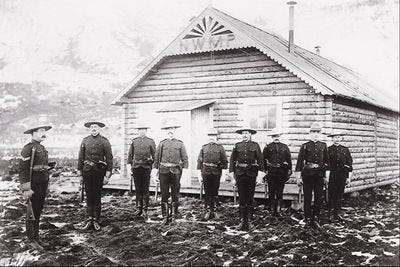
And while no priests or crew of the Budd ever took part in these experiments, this arrangement carried over into the creation of this unique landship. It served as a sort of roving post of civilizing efforts - bringing civil administration and religion to the peoples of the Northwest Territories. Beauracratie et sacrements was the ship’s unofficial motto, emblazoned on its hull.
The only notable event emerging from this church-landship cooperation was one in the negative, and quite unattached to the Budd itself. One of her priests, Rev. Archibald Ingliss, was later sent to Norfolk, England as part of a pulpit exchange during the Second World War. While serving a small parish in the village of Studley Constable, Rev. Ingliss encountered what he (accurately) believed to be a small German raiding party. However, due to his strong North American convictions that church and state should in fact be separated (not a small irony considering his service aboard the Budd), Ingliss refused to ring the church bell to alert the Home Guard but instead tried to minister to the infiltrators. As he later pleaded to the diocesan bishop, gratia coram patria.
As is well known, despite the raiders being eventually discovered and captured, one of the German officers managed to get close enough to a vacationing Winston Churchill, shooting him dead - only to find out later that it was a body double. Less well known is how the whole adventure might have been averted had the small country parish been staffed by a loyal Church of England churchman rather than the overly punctilious Rev. Ingliss.
~~~~~
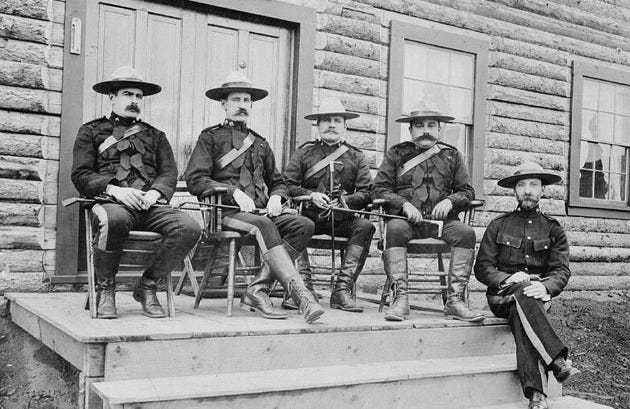
The personnel about the RCMP Budd was small, consisting of a mix of civil and church officials supported by the Mountie crew. The government was represented by a magistrate and his clerk, two ombudsmen (in reality, tax agents), and the nominal captain of the Budd, the King’s Landshipman. The Anglican church contributed a priest and a deacon, sometimes accompanied by a nun when available. The RCMP crew involved one superintendent (the de facto captain), one inspector, one sergeant, and seven constables, two of whom were assigned to the care of the dog team. Typically, the officials bedded in the small office aft, while the constables pitched tents on the main deck. When weather was particularly harsh, the score of men would pile into the cramped office quarters, which they drily termed, “stacking up.”
Care was given to recruit constables with linguistic skills to handle the cultural diversity in the Northwest Territories, and over the years included Danes, Doukhobors, Fenians, Québécois, and Inuit among other First Nations tribe members. History was made in 1919 with the appointment of Panu Nanook as deputy constable aboard the Budd, some five decades before women were regularly admitted to the Royal Canadian Mounted Police.
The RCMP Budd was involved in several high value pursuits and arrests, but contrary to popular belief was only tertiarily involved in the famous Albert Johnson manhunt along the Rat River in 1932. At the time, the Budd was stationed outside the remote hamlet of Paulatuk, helping to negotiate labor relations in the local coalmines. Her role in the Johnson affair was reduced to passing along radio communiques from Ottawa to Mountie units closer to the action.
~~~~~
However, close to a decade earlier, the Budd was single-handedly responsible for tracking down and arresting the infamous assassins of the Doukhobaor leader, Peter Verigin, a fact largely lost to history, even among some terranavislogists. The history of Peter Verigin and his Doukhobor sect is well documented elsewhere, but a brief review here may prove helpful.
Verigin was the leader of an unusual Russian sect severely persecuted for their unorthodox - and pacifist - beliefs. Doukhobor (духобор - “Spirit-wrestlers”) was a pejorative label given them by an Orthodox bishop. However, the sect took it up as their own, much like the English Puritans from an earlier era. By the early 20th century, with the help of fellow pacifists such as the Quakers, thousands of Doukhobors had emigrated to Canada, thus becoming the largest mass immigration group in Canadian history.
But relations with their more conformist Canadian neighbors did not always proceed smoothly, and by 1924 Verigin’s strong personality had attracted a number of enemies, both within and without the Doukhobor community. One of the groups which opposed Verigin’s leadership was a small group of Doukhobor immigrants who termed themselves the Ostatok (Остаток - “The Remnant”). The Ostatok were strongly influenced by various Ku Klux Klan ideas that had somehow made their way north of the 49th parallel. They believed that Russians were the rightful heirs to Western Canada as a “promised land” and were thus willing to temporarily forego their pacifism in order to bring about a final, peaceful Doukhobor-led society. In short, these Doukhobor dissidents imbibed an ethnic nativism with an odd twist of Russian nostalgia and millennialism. And Peter Verigin stood in their way.
According to government reports uncovered decades later, two of the Ostatok allegedly got aboard the train at the remote train station of Farron, BC and planted a bomb “with an alarm clock of Italian manufacture” aboard Car 1586, in which Verigin (as well as the politician John McKie) were passengers. When the bomb went off, Car 1586 was instantly immolated, killing Verigin, McKie and several other passengers. Somehow the two assassins jumped off the train and were spotted by survivors as they joined up with a posse of colleagues who then fled north.
Two days later, a suspicious band was spotted skirting the coast of Williston Lake, heading towards the Northwest Territory. It was at that point that Commissioner Perry telegraphed the RCMP post at Inuvik, ordering the Mounties into action. Within thirty minutes, the Budd mushed forth in search of the suspects. Finally, after two weeks of hard driving and many false trails, Métis trappers near Mayo Lake reported trading with a dozen Caucasian men clad in white uniforms, desperate for provisions.
It was not long before the intrepid crew of the Budd tracked down the Ostatok band to the remote silver mining hamlet of Keno City. The suspects were spotted outside a small casino which they fled into as the Budd approached. Superintendent Angus MacKenzie quickly disembarked his squad of constables to surround the casino, while he and the ship’s priest approached the building to negotiate a surrender.
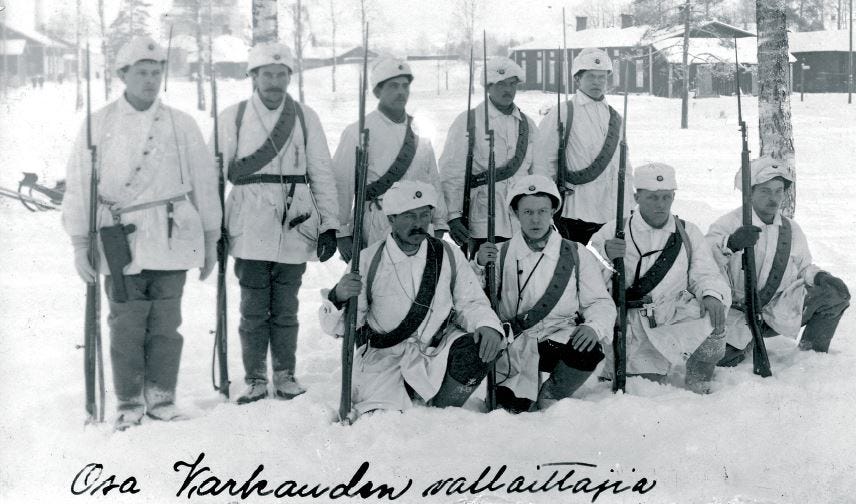
The two men had hardly stepped off the ship before rifle fire rang out from the casino. The dissident Doukhobor band was apparently not ready to reconsider the advantages of pacificism. The details of the skirmish have been well preserved in A.J. Canon’s book, Where Moose Go to Die, later made into a Hollywood adventure starring Errol Flynn. In brief, Superintendent MacKenzie ordered the surrounding Mounties to open fire while he charged the Budd straight into the small casino despite considerable danger to both man and beast. In the end, two of the dissidents were killed, two were wounded, and the rest captured. The only Mountie injury was to MacKenzie himself, who took a gash above his right eye from a dislodged icicle. It turns out that despite their fearsome appearance and zealous beliefs, the Ostatok spent more time translating KKK tracts into Russian than practicing on the rifle range.
As news of the victory hit the airwaves, a radio host recited a little ditty that remained popular with Canadian children for decades, if now politically incorrect:
Hey there little Eskimo
Watch out where those Mounties go
Don’t bomb Sashas in the snow
In view of this feat, the Budd was awarded the Distinguished HMS Alert Badge by King George V, one of only a handful of landships to receive this honor. The seal is now on display at the RCMP post in Inuvik. It was fortuitously removed from the mast of the Budd before she was sold for scrap to the United States. After her transfer to Seattle, the RCMP Henry Budd was then towed to the Atoll Islands, where she “participated” in the 1946 U.S. atomic tests. Sadly, if predictably, she did not survive.
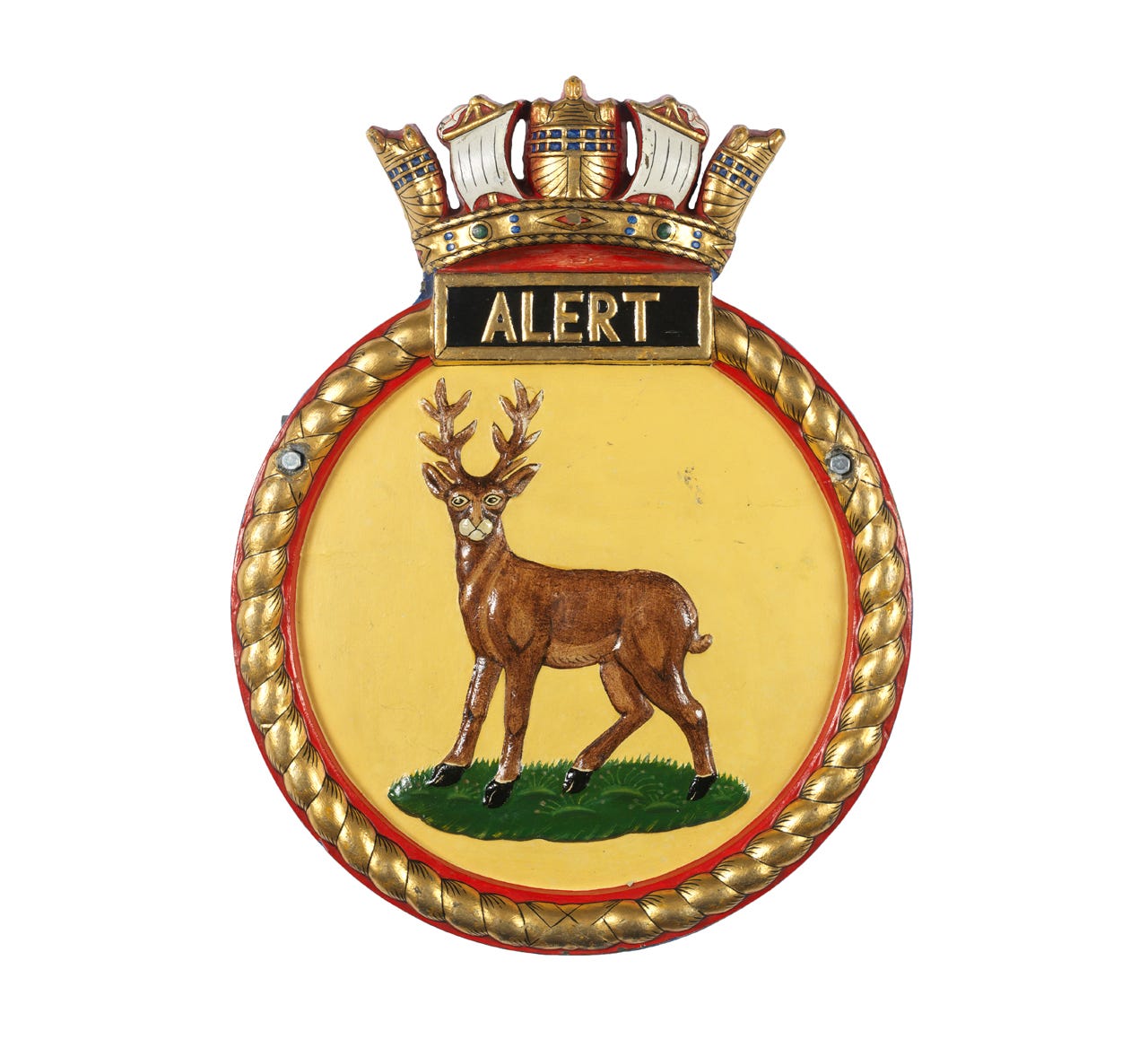
~~~~~
By way of epilogue, despite no forensic evidence linking the captured Ostatoks to the explosion aboard Car 1586, all were nonetheless sentenced to life in prison. Most had their sentences commuted after a decade if they promised to enlist in the Canadian armed forces. At least two served as translators aboard merchant ships on the dangerous Arctic Convoys to Archangel and Murmansk during the Second World War. Ironically, mainstream Doukhobors were treated with more suspicion by the government due to their ongoing pacifism and occasional “naked protests” against societal conformity. Doukhobors were disenfranchised as a whole from 1944-1955.
As most people remember Errol Flynn more for Robin Hood than for Where Moose Go to Die, so today the RCMP Budd may not be as well remembered as terranavislogists would like. We must satisfy ourselves that her innovative employment of Furloy and her adventurous spirit changed the world as we know it. For what would 20th century history be without landships? Indeed, their vaunted magnificence and unfulfilled promise serve as a metaphor for our time. On this, no one has written better than Alfred Fukuyama in his seminal, The End of Landships. But there would be no end without a beginning, and there would be no beginning without a humble Canadian skiff sailing across the tundra.



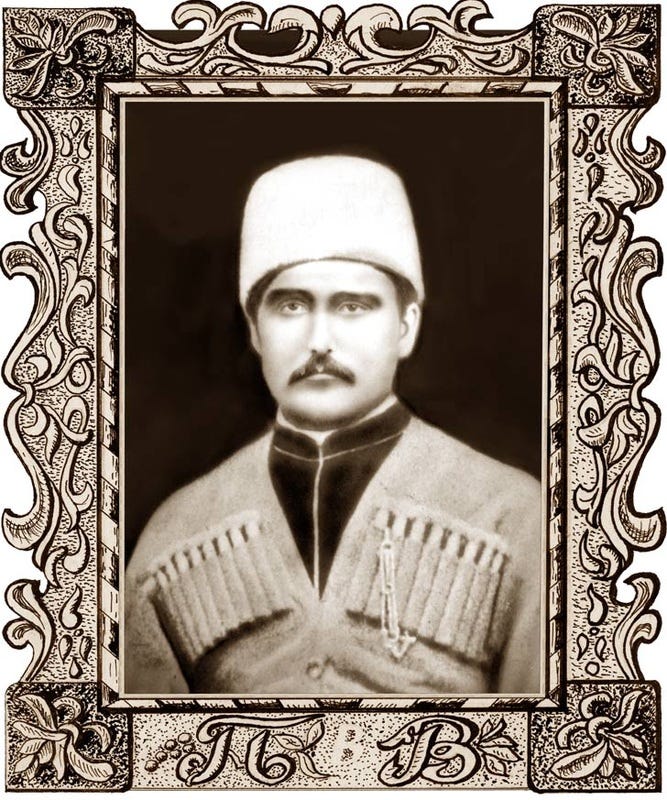
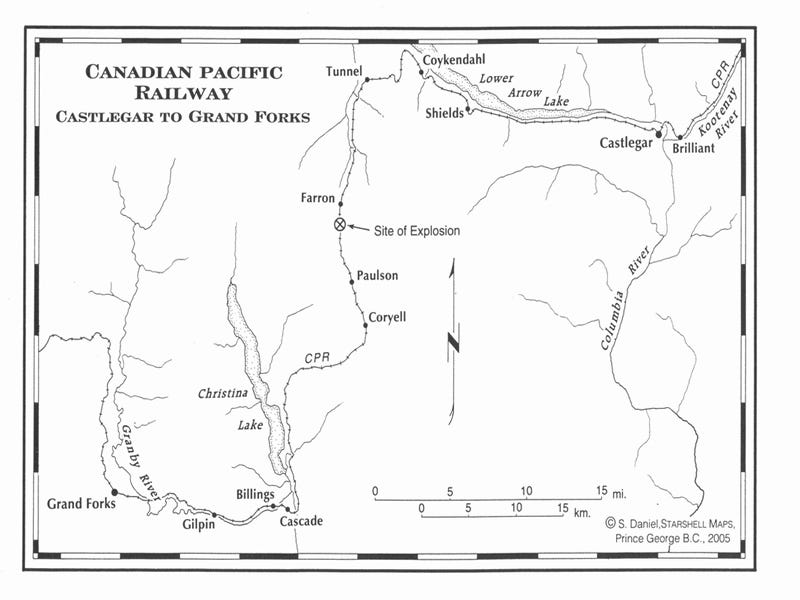
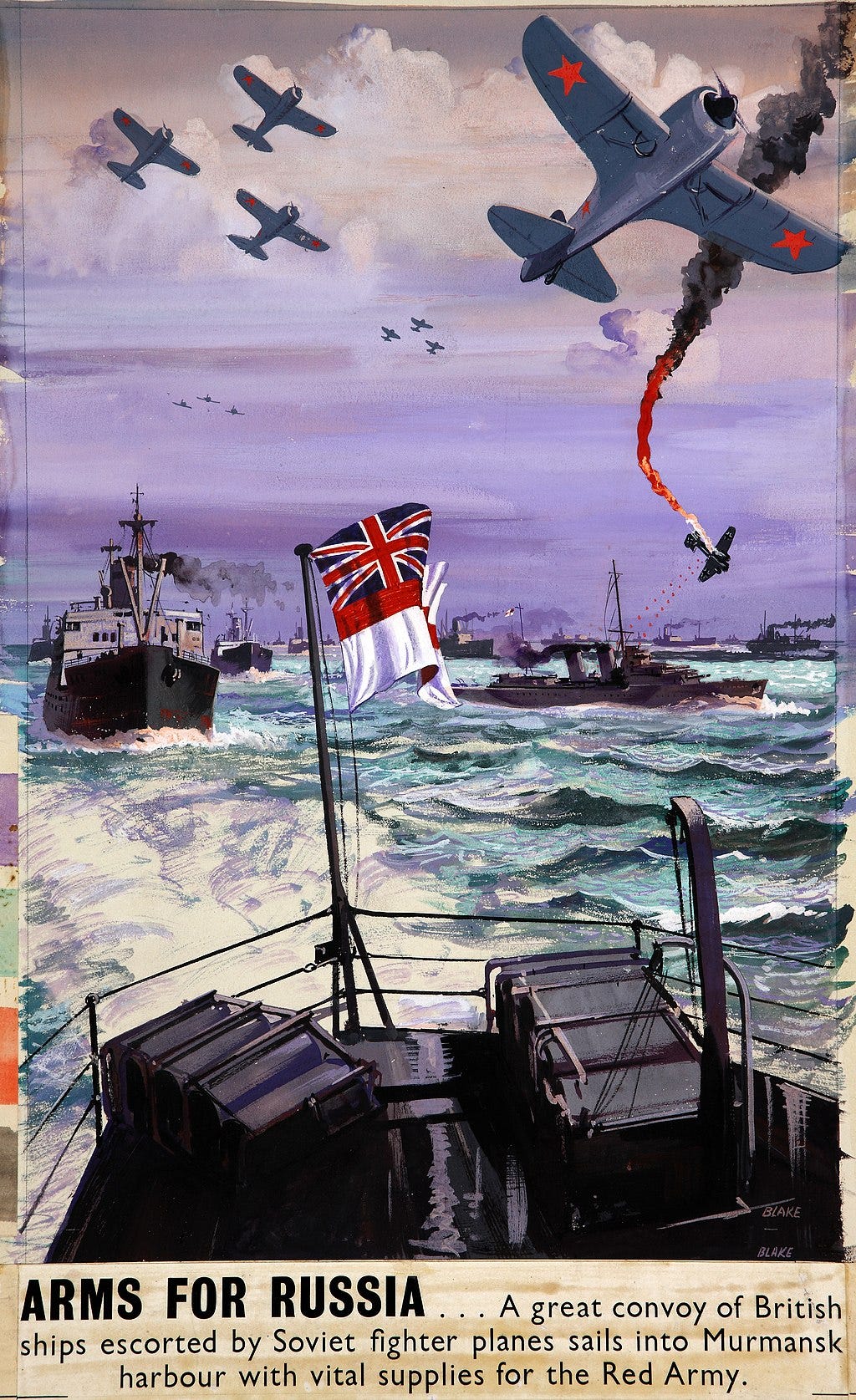
I enjoyed some good laughs reading this.